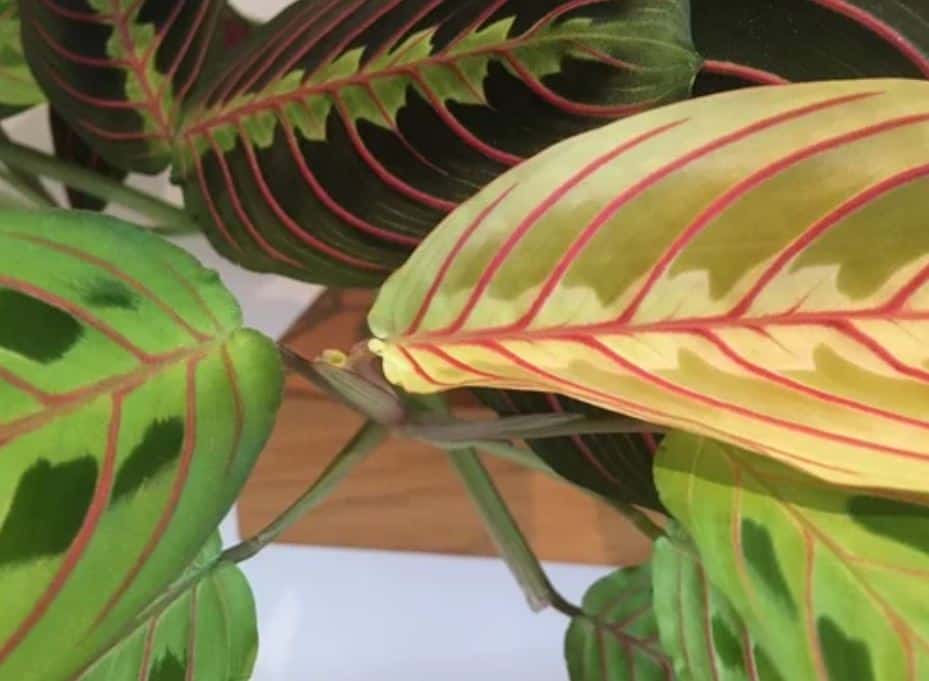The prayer plant is favored among houseplants because of its oval-shaped, exquisitely patterned leaves. Sometimes too much, these plants are loved by indoor gardeners. Although a few illnesses and pests may also be to blame, environmental issues are often the reason for prayer plants becoming yellow. Continue reading to learn the potential reasons and remedies if your prayer plant turns yellow.

What Causes Prayer Plants Yellow Leaves?
Environmental Stress
The wrong care of Maranta prayer plants is the primary source of issues. Leaf tips and margins may burn under bright illumination or from too much phosphate or fluoride, creating a strip of yellow tissue between the living and dead tissues. Yellow prayer plant foliage is a symptom of chlorosis, particularly on young leaves.
Place your plant somewhere with indirect light, then water it with distilled water. If your medium’s pH is around 6.0, a liquid iron fertilizer combined according to the instructions on the box will help treat chlorosis. It could be necessary to repot or do a soil test.
Fungal Disease
A fungus called Helminthosporium leaf spot makes tiny, wet patches on the prayer plant’s foliage. These dots quickly became yellow and spread into ten regions with yellow haloes. This fungus establishes itself when plants are routinely over-irrigated and have their leaves repeatedly submerged in standing water.
To reduce the danger of illness in the future, fix the irrigation issue and water plants just at the base in the morning so that water will rapidly evaporate from splashed surfaces. Neem oil or the fungicide chlorothalonil may be used to treat an existing illness, but it’s crucial to avoid further outbreaks.
Cucumber Mosaic Virus
Maranta’s yellowing leaves may be caused by the cucumber mosaic virus, particularly if the yellowing alternates with apparently healthy green tissue. Older leaves have yellow line patterns on their surfaces, while new leaves may emerge tiny and deformed. Plant viruses are unavoidable, but you can do little about them. To avoid spreading the virus to other houseplants, it is advisable to kill your plant.

